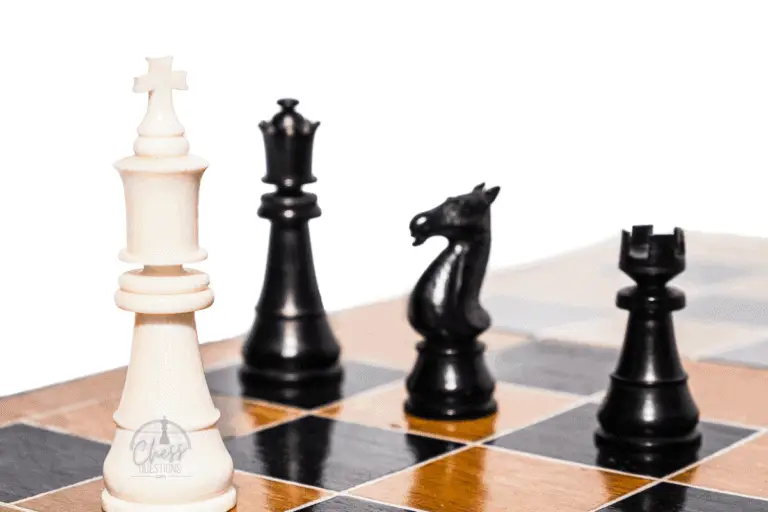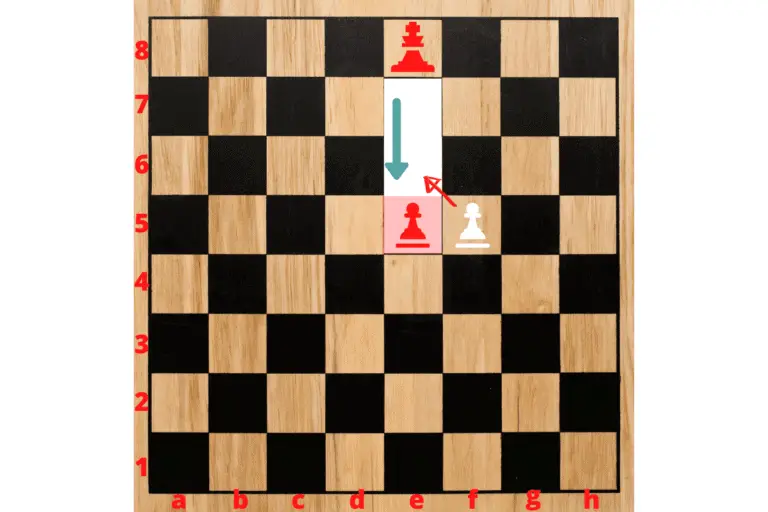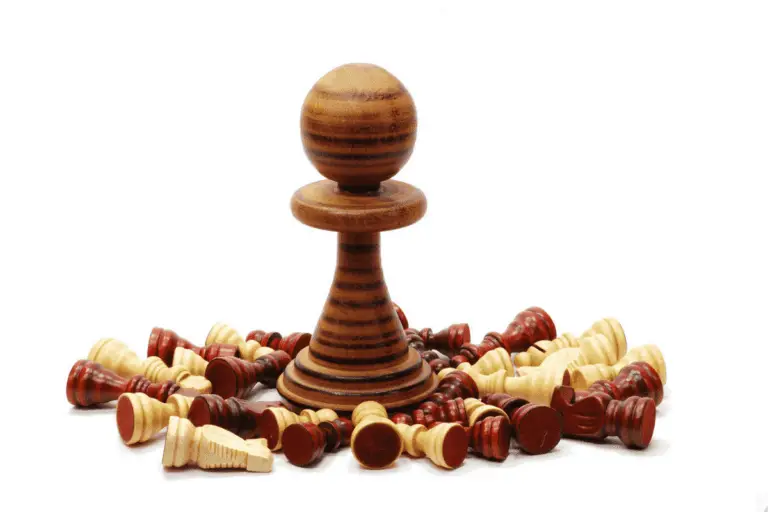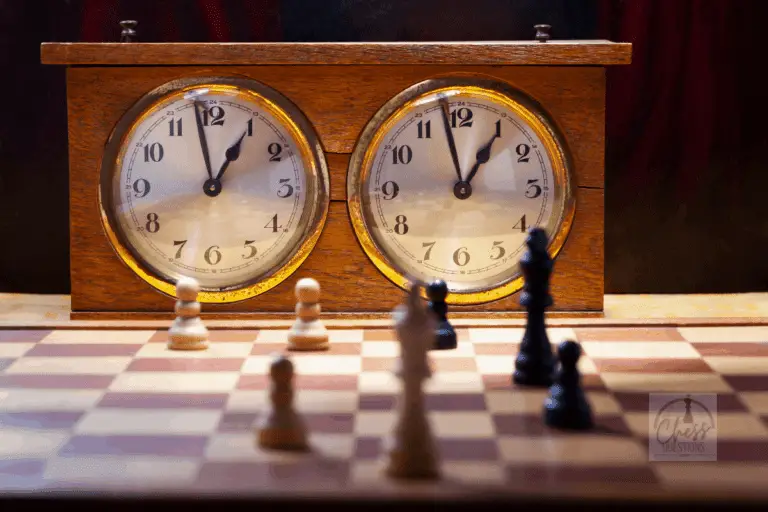Touch Move Rules for Chess Explained: (Friendly or Official)
⭐⭐⭐ Take 6 minutes to read and improve your chess game ➡️ : This article was first published on, and is Copyright of Chessquestions.com
If you’ve just started playing chess, chances are, you would’ve come across the touch-move rule. You’ve been playing a game with a friend, you touched a piece and they explain you have no option but to move that piece now. You almost certainly have questions about whether this is a real rule of chess, or if your opponent was taking advantage of your lack of knowledge. Well, let’s address this and find out if you can touch a chess piece without moving it.
The touch-move rule in chess dictates once any chess piece is intentionally touched, a player has a commitment to move the piece to an accessible square or capture. The only exception is if no legal move is available. Touch-Move is a strict rule in the FIDE Laws of Chess.
Read on to find out much more about the touch-move rules including history, modern use and exceptions including castling rules.
When did the touch move rule appear in chess?
While there is no exact date of when this chess rule was invented, it first appeared in Luis Ramirez de Lucena’s book Arte de Andres in 1497 [One of the very first books on chess theory]. Later, even the former American President, Benjamin Franklin mentioned it in his essay – The morals of chess.
The touch move rule goes back a long way in chess history and is not a relatively new concept. It is often regarded as chess etiquette as opposed to a rule, but it is there in the FIDE laws of Chess in Article 4: The Act of Moving the Pieces.
4.1 Each move must be made with one hand only.
4.2 Provided that he first expresses his intention (for example by saying „j’adoube“ or “I adjust”), the player having the move may adjust one or more pieces on their squares.
4.3 Except as provided in Article 4.2, if the player having the move deliberately touches on the chessboard:
a. one or more of his own pieces, he must move the first piece touched which can be moved
b. one or more of his opponent’s pieces, he must capture the first piece touched which can be captured
c. one piece of each colour, he must capture the opponent’s piece with his piece or, if this is illegal, move or capture the first piece touched which can be moved or captured. If it is unclear, whether the player’s own piece or his opponent’s was touched first, the player’s own piece shall be considered to have been touched before his opponent’s.
FIDE LAWS OF CHESS
If you touch a piece that can not make a legal move to an accessible square you can then make any other legal move. Do not make a habit of this though.
You can not touch a chess piece without moving it according to the rules of chess. This applies to both official games where there is no discussion and if you so wish be applied when playing a casual friendly game.
Why does the touch move rule exist?
There are two main explanations for why it exists in a chess game, though there might be many others
1. Historical-Perspective
As you read above, this rule has been in existence since the 15th century. Also back in those days, chess was considered a royal game, played by honorable men and women.
So a possible explanation to why it exists could be that the players of the past found it disrespectful to touch one piece, change their mind and move another. What a careless, irresponsible and dishonorable act.
2. Game-based Perspective
Also, this rule prevents a professional chess player from taking unfair advantage of moving a piece to a particular square and then calculating the sequence ahead. After all, it’s much harder to calculate long variations in your head than when the position arrives on the board.
What happens when you touch a piece on a chess board when it is your turn?
When you intentionally touch a chess piece, you are forced to move that piece only and not any other. Even if you realize after touching the piece that all possible moves with it are bad, you’ll still have to move it.
If you don’t comply, and the game is a tournament chess game, or even a friendly chess club game, your opponent can make a claim with the arbiter who’ll eventually force you to make the move with the same piece.
But what if you realize that the move you want to play is illegal and there’s only one legal move with the given piece? In that case, you’ve to make the only legal move, even if it’s the worst possible move in the position. But what if there’s no legal move with the touched piece? Then the opposition can make a claim for an illegal move with the arbiter. The penalty will be given accordingly.
If you touch a piece in chess do you have to move it?
If you touch with the intention to move it, then yes.
But if you unintentionally touch it, then no. Unintentional touching includes adjusting a piece or when you touch a piece by mistake.
Make sure to say ‘adjust’ before touching the piece. If you don’t, your opponent has the right to claim this with an arbiter.
Things get a little unclear when you touch a piece by mistake and your opponent claims it with the arbiter. In that case, you need to convince the arbiter that it was an unintentional mistake. Sometimes the arbiter will ask the boards on the side whether they saw anything. But most of the time, the arbiters have a good intuition as to who’s lying and who’s not, so you can expect them to make the right decisions.
Can you touch your opponent’s pieces in chess?
You are allowed to touch the opponent’s piece but only if you want to capture or adjust it.
Once again, if you have an intention to capture, you’d be forced to play the specific move to execute the capture.
However, if you wish to adjust it, please say ‘adjust’. Also touching your opponent’s piece too many times might cause them to lose their concentration. They could make a claim for a disturbance with the arbiter. In general, you should touch your opponent’s piece only when you see it’s not properly placed on its square.
How does the touch move rule work in pawn promotion? Anything I should be careful of?
This rule gets a little tricky during pawn promotions. As per the rule book, the correct way to promote the pawn and stay within the touch move rules follows this order –
- Place it on the last rank.
- Grab a piece that you want the pawn to promote to. It could be a queen, a bishop, a rook or a knight)
- Place the promoted piece on the 8th rank and then remove the pawn.
OR
Remove the pawn once you put it on the 8th rank and then place the promoted piece.
Press the clock only when the whole sequence is completed. It marks the end of your move.
This is the right way to promote.
Even a lot of strong chess players get this wrong sometimes and their opponent could claim an illegal move for it. It’s considered unsportsmanlike at the top level to claim a wrong pawn promotion, but it’s better to be on the safer side, isn’t it?
Here’s the WRONG way to promote the pawn –
- Grab a piece you want to promote and drop it on the 8th rank.
- Remove the pawn from the 7th rank.
Even though this method is common at the top level of chess, don’t go for it. You’re relying on your opponent to not make a claim. There have been instances where claims were made and points were lost.
Touch move rule for castling
A lot of people get this wrong, especially the beginners. Also, there are different conditions to remember here. We’ve covered it in another article – the complete guide to castling.
Conclusion
In my professional life as a chess player, I’ve seen some master-level players breaking this rule and getting away with it too! It’s very unsportsmanlike but it happens.
Also when such claims are made, the arbiter gets involved. If they don’t find conclusive evidence then it’s all left to their intuition to make the right choice. This is where mistakes could happen. However, in most cases, the arbiters are likely to make the correct decision.
Follow the touch move rule and make sure you stay on the correct side of the rulebook. I hope this article has made you understand everything that there is to know about the touch move rule.






